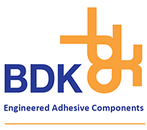Reducing the Risk of Adhesive Irritation in Medical Applications
Even with the varying states and conditions of skin, whether it’s healthy or broken, skin has low surface energy. It is all about balance when it comes to adhesion to skin; if the adhesion is low, the device or dressing won’t stay in place but if it is too high, adhesive irritation could occur.
When the skin to adhesive bond outweighs the skin cell to skin cell bond, this damages your skin’s outer protective later by separating the epidermal layers. However, this is normally after repeated application and removal of the adhesive. Adhesive irritation causes the skin to look chafed, flaky and dry in the area where the adhesive has been placed.
Achieving the Correct Balance for Specific Applications
The ideal balance for skin adhesion in medical applications is:
- Sufficient tack to initially secure the device or dressing in place;
- Sufficient adhesion to keep the device or dressing in place, in order to work effectively, for the duration of wear-time;
- Comfortable removal without causing skin trauma or irritation, like tears or stripping.
Low Trauma Adhesives
By using low trauma adhesives, especially for broken and frail skin or repeat application like CGM, you can reduce the risk of irritation and skin tears.
Some of the most common low trauma adhesives used in medical applications are:
Low Trauma Non-Silicones
Non-silicones have gentle properties yet strong initial tack and adhesion; this means that they can have long wear time. They are commonly used for dressings due to their porous structure, breathability and good MVTR. As well as this, non-silicones are considered to be low trauma due to their formulation allowing gentle removal, releasing cleanly from the top skin layer with no residue.
Soft Silicone Adhesives
Soft silicone adhesives are also recognised as low trauma adhesives for similar reasons. Although permanently in a tacky state, they do not stick to hair or attract dead skin cells; this means that when used for dressings or CGM, they can be repositioned and reattachment without trauma. This also includes trauma to the actual wound as the adhesive forms a seal between the dressing and the skin, reducing pain and risk of weeping.
Safety Precautions and Prevention Methods
In addition to low trauma adhesives, here are some guidelines you can follow in order to ensure you avoid adhesive irritation for patients.
Look at Patient’s Allergy and Sensitivity History
One of the best ways to minimise the risk of adhesive irritation is to obtain the patient’s history documents and identify if they have any suspected sensitivities. This should indicate if they have ever experienced irritant contact dermatitis when using adhesive products.
Patch Testing and Analysis
Patch testing may have to be undertaken in order to determine the true cause of repetitive irritant contact dermatitis. Contact the manufacturer of the adhesive product in question so they can assist in identifying potential allergens so it can be prevented in the future.
Use a Protective Barrier Beforehand
There are products available to help counter adhesive irritation and skin injury, like the 3M™ Cavilon™ No Sting Barrier Film for example. By applying this before applying an adhesive product, it will provide comfort and protection for patients, even on damaged skin.
BDK Medical Adhesive Tape Converters
At BDK, we are highly experienced in manufacturing and distributing adhesives for medical applications. By working with us, we can help you find the ideal low trauma adhesive for dressings and other wound care requirements. We have been in the industry for many years, so please contact us today if you have any further questions.
